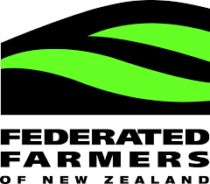Why does agriculture need to take action on warming? How do targets, metrics and pricing work? What would going into the Emissions Trading Scheme (ETS) mean?
As Beef + Lamb NZ gears up for the agriculture emissions pricing consultation in February, those questions and the application to policy of the issues surrounding them have been put to climate change scientists Dave Frame and Adrian Macey for discussion in a one-hour podcast.
The podcast addresses the fundamentals of climate science as they relate to the farm sector and key considerations such as applying GWP*, the metric that’s getting a lot of attention because its champioons contend it better accounts for the different warming behaviours of short-lived gases such as methane – unlike the GWP100 metric used in international agreements which uses carbon equivalence.
More about the GWP* metric was contained in an earlier story.
Dave and Adrian are strong advocates for the appropriate use of GWP* and in the podcast they outline where it makes sense to use this relatively new science and how it applies to He Waka Eke Noa and to the methane reduction targets.
They explain how aspects of the options proposed by He Waka Eke Noa reflect the fundamentals of the science behind GWP* – particularly, having a separate price for methane and accounting for methane emissions based only on weight.
The discussion makes a case for keeping agriculture out of the ETS. If agriculture were to go into the ETS (it is argued) the price of methane would simply be linked to the carbon price, with no separate methane pricing, and it wouldn’t matter what progress was made on reducing agricultural emissions – instead, the price would be driven by what is happening with carbon.
Dave talks about why it’s difficult to directly apply GWP* at the farm level – getting the framework right and separately addressing the targets addresses farmer concerns in this respect.
Dave and Adrian also outline their thinking about appropriate methane targets, contending that while the target of a 24-47 percent reduction in methane by 2050 is too high, the extent of agriculture’s warming impact and the urgency of needing to address climate change means we need to be careful to not aim too low. They note that while the sector has reduced its emissions, this was from a very high level and while there may have been no additional warming, the ongoing warming is still at a high level.
B+LNZ does not agree with the current methane reduction targets in the Zero Carbon Bill and in a parallel process to He Waka Eke Noa it sas it will be continuing to work to get these revised downward and ensure that they are fair and equitable.
What’s being consulted on in February
The Primary Sector Climate Action Partnership – He Waka Eke Noa – has developed two alternative emissions pricing options as alternatives to the ETS.
These options are the result of work that has happened since the agriculture sector collectively convinced the Government not to bring it into the ETS in order to preserve the hard-won ‘split gas’ outcome in the Zero Carbon Act, so that farmers wouldn’t be at the mercy of the rapidly escalating carbon price and so hey could have more choice and control such as accessing better recognition for their on-farm sequestration.
The two options are the farm-level levy and the processor-level hybrid levy.
More information about these is contained in a summary document. Farmer input was sought during the development of these options, and since the information was released B+LNZ has been undertaking targeted engagement with groups of farmers. A discussion document is being updated and revised to reflect what they and others have told the partnership, and the final consultation document will be released on 31 January.
Source: B+LNZ











